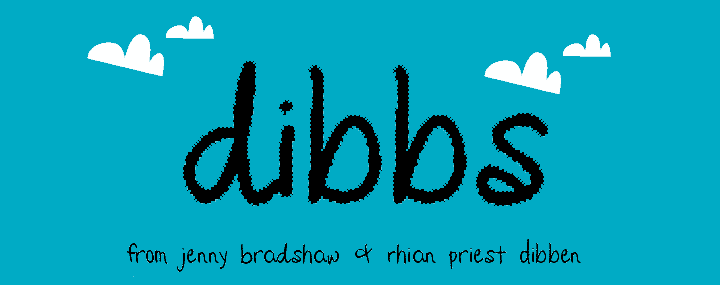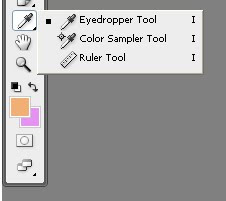Jenny Bradshaw A2 Media

Thursday, May 5, 2011
Wednesday, May 4, 2011
Tuesday, May 3, 2011
Evaluation, Question Four
How did you use new media technologies in the construction and research, planning and evaluation stages?
Due to the revolution of web 2.0 we were able to use the internet as a main source of research. During our research and planning stages, one of the media technologies we used was streaming site - YouTube. YouTube allowed us to view a broad range of real media texts, and get a feel for different styles and genres. It gave us a lot of inspiration and ideas toward the designing and making of our product. We gained a good idea of what our target audience liked/disliked from groups, channels, and comments that they were participating in and we began to visualise ideas for our video.Videos on YouTube that gave us inspiration to include stop motion animation within our product include:
Incomplete lullaby- Lisa Mitchell
Paralyzed – The Used
Amazon Kindle Commercial 1
Deerhunter – Famous last words
We felt that animation was so original and we were intrigued to learn the skills behind it. We used email to contact the creators of stop motion videos over the web, who in response gave us great advice and tips. We could also watch tutorial videos online that would teach us the essentials to animating.
Social networking sites 'myspace' and 'facebook' allowed us to research established bands or artists that were popular with our target audience. We could get an aiming point for the style, genre and image that our target audience like and what expectations they have from these artists. Social networking sites were really useful to us during researchOverall I would say that the internet played a huge main part in our planning and research stages and without it our research would be much more limited to resources such as television and magazines.
We used search engine; Google to search for promotional posters and CD covers across the net. This gave us easy access to existing media products in which we could carry out research for our ancillary task. We also used a scanner to scan in existing CD covers and posters that we had found that we wanted to transfer onto our Blogs. This was useful for comparing and analysing each one and carrying out further research.
During the construction of our video, we mainly used a video camera. This task was the first time I have ever used a video camera so my skills were basic, but developing every week. I learned how to use tools to create different effects with the camera, for example a tripod and dolly, or handheld camera movement. I learned how to frame a shot well and light a studio appropriately. For our animation scenes we used a still SLR pentax camera to take a number of frames that we could create into a video clip using iPhoto. I already have skills with a still camera from AS coursework, but doing stop motion animation has increased my knowledge and allowed me to solve problems. We used the still camera to take location shots, and carry out a photo shoot for our ancillary task.
Location Shots for Music Video
We were able to display our photoshoots in an attractive manor by using Adobe photoshop CS4 to create a contact sheet. This is advantageous because it displays all of the photos on one page in a fashionable and presentable way.
We used a mobile phone to play our track (1234) whilst we were filming the outside scenes to help us keep in time. This was very useful as the mobile phone was portable, had sufficient battery power and was loud enough for the camera to pick up the music over other unwanted sounds. We used a 'Nokia express Music' phone which is especially designed for playing music and suited our needs perfectly.
To edit our product, we used apple software; iMovie and Final cut express. Originally we put our raw footage into iMovie to create a basic sequence and order. When we wanted to really be picky and carry out detailed editing we used final cut express. Final cut allowed us to correct mistakes and solve problems we had made during filming due to it's very acurate precision editing. Websites such as 'dafont.com' allowed us to include graphics and interesting fonts of text within our anciallary tasks that would appeal to our audience.
The main new media technology that has benifitted our project is blogger. Blogger has allowed us to record our progress with dates and times, so we can present all of our work in one place and annotate it for our target audience to understand. We can upload videos, photos, links and tags using blogger, and even embed microsoft word, powerpoint or excel documents using websites such as Scribd.
Evaluation, Question Three
What have you learned from your audience feedback?
To gain audience feedback we used a number of methods:
1) Asking our audience to watch our video at a computer, and give us verbal feedback. This was useful because we could discuss with our audience the parts that had worked well and what they thought needed improving.
2) Creating a FaceBook page dedicated to our product, in which our audience had the ability to watch our video, comment, like and answer a set of questions we had asked. This was useful because alot of our target audience had easy access to facebook, it was quick for our audience to answer(ie. a few clicks of a button) and it was a sociable way to connect with our audience.
The development of Web 2.0 has been sincerely beneficial when gaining feedback from our audience.
We have posted a finished copy of our video to our youtube channel and facebook page in which our audience can comment and fill our our google docs questionnaire (connected through a link). This gave us very specific and detailed feedback.
Overall, the majority of feedback was very positive and complementary. The main positive things and were along the lines of:
-Very uplifting, cheery feel to the song. Highly enjoyable to watch.
-Stop motion scenes were original, fun, and were finished professionally.
-Nice use of mise en scene.
-Enjoyed the variety of shots and locations used (keeps audience interested and excited.)
People had told us things that we could improve on. They were along the lines of:
To gain audience feedback we used a number of methods:
1) Asking our audience to watch our video at a computer, and give us verbal feedback. This was useful because we could discuss with our audience the parts that had worked well and what they thought needed improving.
2) Creating a FaceBook page dedicated to our product, in which our audience had the ability to watch our video, comment, like and answer a set of questions we had asked. This was useful because alot of our target audience had easy access to facebook, it was quick for our audience to answer(ie. a few clicks of a button) and it was a sociable way to connect with our audience.
The questions and results can be viewed here
This is a screen shot of some of the questions we were asking via facebook:

and thirdly,
3) Using Google Docs to create a written questionnaire which would give us the feedback we needed. We made this questionnaire accessible online through Facebook, and promoted it as much as we could using private email, links, posts, and a dedicated facebook page for feedback.
This is a screen shot of some of the questions we were asking via facebook:

and thirdly,
3) Using Google Docs to create a written questionnaire which would give us the feedback we needed. We made this questionnaire accessible online through Facebook, and promoted it as much as we could using private email, links, posts, and a dedicated facebook page for feedback.
The development of Web 2.0 has been sincerely beneficial when gaining feedback from our audience.
We have posted a finished copy of our video to our youtube channel and facebook page in which our audience can comment and fill our our google docs questionnaire (connected through a link). This gave us very specific and detailed feedback.
Overall, the majority of feedback was very positive and complementary. The main positive things and were along the lines of:
-Very uplifting, cheery feel to the song. Highly enjoyable to watch.
-Stop motion scenes were original, fun, and were finished professionally.
-Nice use of mise en scene.
-Enjoyed the variety of shots and locations used (keeps audience interested and excited.)
People had told us things that we could improve on. They were along the lines of:
-Perhaps correct ''jumping'' from one shot to another at times so the video appears smoother
-A couple of places within the song, the stills could be more accurately synced in time with the beat
-Possibly include some more animation
We would have loved to include more animation scenes/make them longer however we found the stop motion very time consuming to film and edit, therefore the scenes were short but to a good standard. Because Final Cut express was new to us, it took us a while to develop the ability to overcome problems and edit successfully. Therefore next time we would use our broader knowledge of editing and would be able to solve some of the tiny syncing/jumping problems.
Evaluation, Question Two
How effective is the combination of your main product and ancillary texts?

I feel that the combination of our ancillary and main product work strongly as a pair, and that they compliment and enhance one another. We have tried to keep an established, recognizable and constant theme in a number of ways. Firstly, as the narrative of our main product was filmed outside we thought that we should repeat this through our ancillary products. The photographs on the album cover and poster are all located in the same place, starring shots of grass, trees and woodland, as shown in the video! We have made sure that our character (Sophia) is dressed and styled in a similar way during ancillary and video, therefore creating her an image that will appeal to the same audience in both products.
We have used a constant colour theme throughout both products. To do this we have used the 'eyedropper' tool on Adobe Photoshop cs4 which allows us to share the exact shades of colours between products.

Personally i would say that the video has less of a link to our poster and album cover, however in real media texts this is quite common. This is because our video is based on one song from an album. If all the songs had exactly the same theme it would become repetitive and boring. I think our album cover is sufficiently representative of our video.
Evaluation, Question One
In what ways does your media product use, develop or challenge forms and conventions of real media products?
Throughout the planning, research, construction and post production stages, we have constantly been aware of typical conventions and how we are going to meet/develop/challenge these conventions within our product.
During our ancillary task we challenged normal conventions by using a picture of an object (easle) on the front cover of our CD, as opose to the artist. This is different to the audience's usual expectations, making the cover seem striking and original.
Ancillary task's.
Throughout the planning, research, construction and post production stages, we have constantly been aware of typical conventions and how we are going to meet/develop/challenge these conventions within our product.
During our ancillary task we challenged normal conventions by using a picture of an object (easle) on the front cover of our CD, as opose to the artist. This is different to the audience's usual expectations, making the cover seem striking and original.
Ancillary task's.
Subscribe to:
Comments (Atom)







